CESNI Meeting on 10 April 2025
10/04/2025
The European Committee for drawing up Standards in the field of Inland Navigation (CESNI) met in Strasbourg (France) on 10 April 2024. The meeting was chaired by Mr Ivan Bilić-Prcić, representing Croatia.
The Member States adopted a number of documents: an explanatory notice to ES-TRIN 2025, a brochure on the use of Track Guidance Assistants (TGAIN), a summary of the differences between ES-RIS 2023/1 and 2025/1, as well as guidelines regarding personal information transmitted in the context of RIS. These documents will be published on the CESNI website by the end of May, approximately one month after their adoption.

Source: CESNI
In the field of technical requirements for vessels
The CESNI has adopted an explanatory notice documenting the new features in ES-TRIN 2025/1 (European Standard laying down Technical Requirements for Inland Navigation vessels). ES-TRIN 2025/1 is due to enter into force on 1 January 2026. The differences in ES-TRIN 2025/1 include changes to electric propulsion systems, the use of methanol as a fuel, and elevating wheelhouses. The explanatory notice is intended primarily for the Inspection Bodies responsible for carrying out vessel inspections, but also for shipyards, equipment manufacturers and shipowners.
The CESNI has also started work on a standard for the measurement and calculation of air pollutants. The aim is to provide a recognised, reliable and reproducible methodology for measuring and calculating emissions of air pollutants. A section on greenhouse gases and a definition of emission classes could be added at a later date.
The CESNI is also starting to prepare ES-TRIN 2027, which is due to be adopted in 2026. All the transitory provisions for existing vessels have now been brought together in a single table. The criteria to benefit from the transitional provisions have also been adapted: only the technical state of the craft is considered during the inspection, with no distinction being made between a craft with a continuously valid certificate and a craft for which the certificate has not been continuously valid.
Lastly, the CESNI will hold a workshop on the new model for the inland navigation vessel certificate on 23 September 2025, in Strasbourg. Further information will be available in the coming weeks.
In the field of professional qualifications
A brochure on the use of Track Guidance Assistants for Inland Navigation (TGAIN) was adopted during the meeting on 10 April. The Track Guidance Assistant for Inland Navigation is a system for automatically steering the vessel along a pre-defined track; its purpose is to support the boatmaster and reduce the steering tasks.
Drafted by the CESNI in cooperation with EDINNA, the brochure contains important information for the safe use of TGAIN. It is primarily intended for training institutes and manufacturers. It is relevant to inland navigation:
- as basic lesson material for training institutes;
- for training of crew members, both at operational level (boatman) and management level (boatmaster);
- as a basis for the development of working instructions for TGAIN;
- as a catalyst for discussion on the subject of TGAIN among nautical experts.
In concrete terms, the brochure contains a six-point programme setting out the competences acquired TGAIN operators should have. The CESNI intends to update the competence standards for management level to include the competences linked to the use of TGAIN.
The CESNI has also published guidelines for doctors, providing them with additional information on how to complete the medical certificate relating to the medical fitness assessment.
In 2025, the CESNI will focus primarily on future standards for electronic tools, a draft European database for the boatmaster exam, and the competences linked to the operation of hydrogen powered vessels.
In the field of information technologies
During the April meeting, the CESNI adopted a summary of the differences between the 2023/1 and 2025/1 editions of ES-RIS, the European Standard for River Information Services. The recommended date of entry into force of ES-RIS 2025 is 1 January 2026.
The summary enables the main amendments to be identified effectively, thus making it easier to implement the standard. It consists of five parts, setting out the amendments made to:
- the specifications pertaining to the electronic chart display and information system for inland navigation (Inland ECDIS);
- the specifications pertaining to the Vessel Tracking and Tracing for inland navigation (VTT);
- the specifications pertaining to the Notices to Skippers (NtS);
- the specifications pertaining to electronic ship reporting in inland navigation (ERI);
- the structure of ES-RIS, in particular the addition of a common part, as well as a number of editorial corrections.
Lastly, the CESNI adopted guidelines on personal data transmitted in the context of River Information Services (RIS). This RIS data is provided by boatmasters to the navigation authorities where it is processed for a range of purposes. This may involve it being forwarded to other navigation authorities, public authorities or private companies. The primary purpose of RIS data collected in this way is to ensure the safety of navigation. These guidelines are intended to propose a definition of personal data in the context of RIS and to list the purposes for which this data may be processed.
Participants at the meeting
The Committee meeting was attended by representatives of:
- 11 Member States: Austria, Belgium, Croatia, Czech Republic, France, Germany, Luxembourg, the Netherlands, Poland, Romania and Switzerland;
- the European Commission, the Central Commission for the Navigation of the Rhine and the Moselle Commission;
- 3 approved organisations: EBU, ESO, GERC.
Next meetings
The Committee will meet in The Hague and Rotterdam (Netherlands) for two days on the following dates:
- Tuesday 28 October 2025 – CESNI meeting (The Hague)
- Wednesday 29 October 2025 – Symposium to mark 10 years of the CESNI (Rotterdam)

